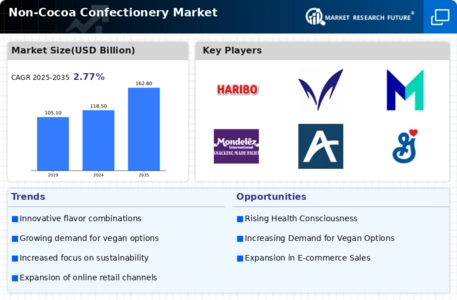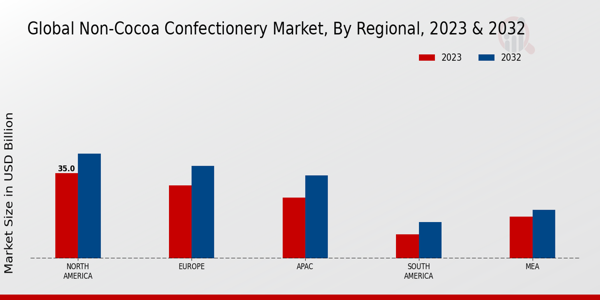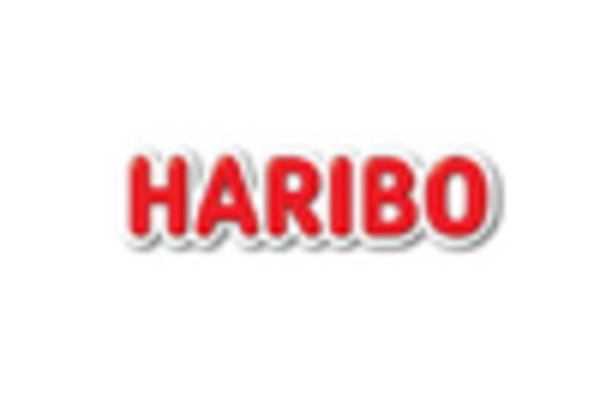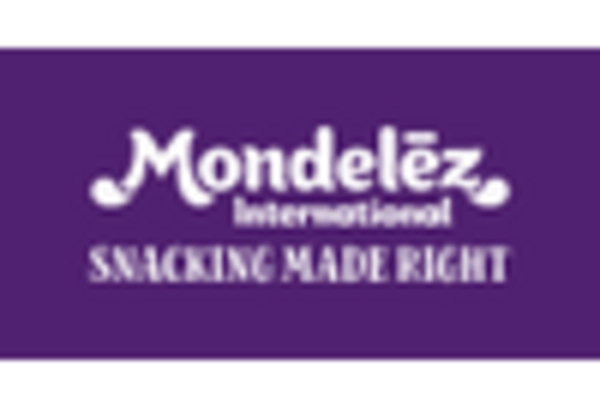E-commerce Growth
The Non-Cocoa Confectionery Market is witnessing a significant transformation due to the rapid growth of e-commerce. With the increasing penetration of the internet and mobile devices, consumers are increasingly turning to online platforms for their confectionery purchases. This shift is particularly pronounced among younger consumers who prefer the convenience of online shopping. Recent statistics reveal that e-commerce sales in the confectionery sector have seen double-digit growth, indicating a robust trend that is likely to continue. As a result, brands within the Non-Cocoa Confectionery Market are enhancing their online presence and optimizing their digital marketing strategies to capture this expanding consumer base.
Diverse Flavor Profiles
The Non-Cocoa Confectionery Market is characterized by an increasing demand for diverse flavor profiles. Consumers are no longer satisfied with traditional flavors; they are seeking unique and exotic tastes that provide a novel experience. This trend is evident in the rise of products infused with spices, herbs, and even savory elements. Market data indicates that confectionery items featuring innovative flavors are gaining traction, appealing particularly to younger demographics who are more adventurous in their culinary choices. As a result, manufacturers are investing in research and development to create distinctive flavor combinations, thereby enhancing their competitive edge within the Non-Cocoa Confectionery Market.
Health-Conscious Choices
The Non-Cocoa Confectionery Market is experiencing a notable shift towards health-conscious products. Consumers are increasingly seeking alternatives that align with their dietary preferences, such as sugar-free, organic, and gluten-free options. This trend is driven by a growing awareness of health issues related to sugar consumption and artificial ingredients. According to recent data, the demand for healthier confectionery options has surged, with a significant portion of consumers willing to pay a premium for products that offer perceived health benefits. This shift not only influences product development but also shapes marketing strategies within the Non-Cocoa Confectionery Market, as brands strive to cater to the evolving preferences of health-oriented consumers.
Sustainability Initiatives
The Non-Cocoa Confectionery Market is increasingly influenced by sustainability initiatives. Consumers are becoming more environmentally conscious, prompting brands to adopt sustainable sourcing and production practices. This includes the use of eco-friendly packaging and ethically sourced ingredients. Market Research Future suggests that a significant percentage of consumers are willing to switch brands if they perceive a commitment to sustainability. Consequently, companies within the Non-Cocoa Confectionery Market are prioritizing sustainability in their operations, which not only meets consumer demand but also enhances brand loyalty and reputation.
Innovative Packaging Solutions
The Non-Cocoa Confectionery Market is experiencing a surge in innovative packaging solutions. As competition intensifies, brands are recognizing the importance of packaging not only for protection but also as a marketing tool. Eye-catching designs and functional packaging that enhances convenience are becoming increasingly prevalent. Recent data indicates that consumers are drawn to products with unique packaging that stands out on shelves. This trend is prompting manufacturers within the Non-Cocoa Confectionery Market to invest in creative packaging solutions that not only attract consumers but also communicate brand values and product benefits effectively.



















Leave a Comment